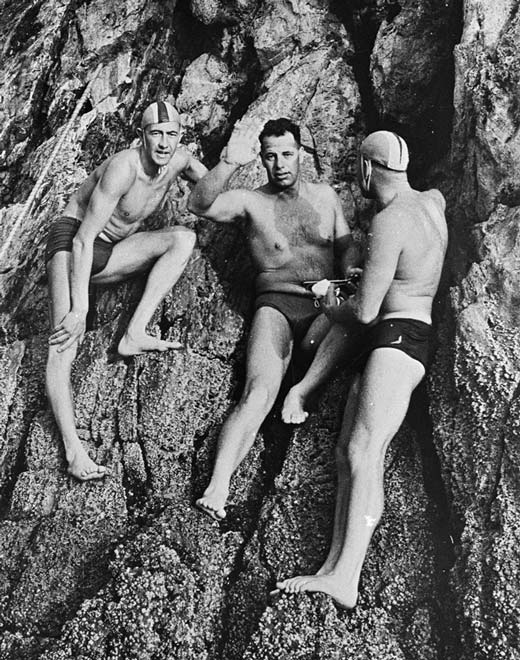Building fitness requires a combination of a number of different fitness elements. Depending on the nature of the event you are training will determine how much of each different element. But one thing remains the same, the bigger you build your base fitness the higher your peak can be. If you scrimp on the base training, your peak fitness will be compromised. Speed-work is essential for developing your peak fitness, but unless you are building it on a foundation of base training it’ll never be as high as your physical potential will allow.
Just like building a house you need the foundation to be laid first. The bigger and deeper those foundations go the higher and more prominent you can build the house. But if the foundation or base is small and shallow it won’t withstand what goes on top of it.
The more time you’ve got to prepare for an event the greater you can build your base fitness before you then add speed-work and intensity to your training to generate your peak fitness.
Regardless of the event you are training for, – from a 5km through to an ultra-marathon or an Ironman – the bulk of energy contribution to get you through the event comes from the aerobic energy system. Therefore we want to maximise your capabilities through your aerobic pathways (there are two, one that uses fat for fuel and the other uses carbohydrates – more on these another day). Aerobic means “with oxygen” and both these pathways require oxygen along with the fuel source (fat or carbohydrates) to facilitate the release of usable energy.

The aim of any base training phase is to enhance your aerobic efficiency. Allowing you to swim, bike, run, row, kayak, (whatever) further with less effort. This means getting oxygen to the working muscles to facilitate the biochemical reaction in the muscle fibre to release the energy into a usable form to allow the muscle to contract and create movement.
Bare with me for a second while I cover some generic anatomy. Each muscle is made up of a number of bundles of muscle fibres that work in unison. These are called fascicles. Each fascicle is made up of a number of muscle fibres (which are a single cell). With in these muscle fibres are thin strands or filaments (called actin and myosin) that slide up past each other when the muscle contracts.
Also within each muscle cell are what are referred to as the power house of the cell and are call mitochondria and this is where the biochemical reactions occur that allow the contracts to occur.
What is does an Aerobic Base look like?
A successful base will see you develop your aerobic efficiency, but what does that look like?
All the parts of the aerobic energy pathway will be optimised and enhanced.
Heart
The heart is key for pumping oxygen carrying blood to the muscles. If the heart can pump more blood with each beat, this will see more oxygen delivered to the working muscles with each beat. To pump more blood with each beat the heart needs a bigger chamber (to fit more blood in it), as this grows bigger the cardiac muscle will also grow stronger and more powerful to a greater amount of blood with each beat. The more frequently the heart beats, but with enough time to fill completely the better the heart will be at growing bigger. If your Heart Rate (HR) is too high the beats occur too close together and won’t have enough time to fill up the ventricular chamber, therefore it won’t grow bigger or stronger, because it won’t need as much force to pump the blood from a partially filled chamber, so a moderate intensity is best to generating these enhancements and optimisations.
Blood
If there is a greater demand for oxygenated blood, the body will generate more red blood cells to carry the oxygen. The body will do this naturally, but some athletes will try and enhance this synthetically and un-ethically through blood doping (by injecting blood back in there system) or by injecting erythropoietin (EPO) which is a hormone that is responsible for releasing more red blood cells. Quality training at a moderate intensity (that can be maintained) will achieve a greater blood volume and also a greater number of red blood cells naturally without the risks associated with doping.
Lungs
Prior to the oxygen getting into the blood stream, an enhanced aerobic system will see the lungs develop their ability to draw oxygen from the surrounding air and transfer that across into the blood stream. The more air you can breath into your lungs will mean more oxygen is also drawn in. This will mean more oxygen is available to diffuse across the internal lung membrane (in the alveoli) into the blood stream. As long as there are enough red blood cells (with haemoglobin) the lungs will get better at doing this at moderate intensities that you can maintain for a long period of time.
If the nose or airway is blocked or obstructed you are minimising the oxygen getting into the system. By trying to hold your breath or wear some sort of mask is actually counter productive for achieving this.
Muscles
Down at the muscular level of the pathway, we can optimise the usage of oxygen this will generate efficiencies as well. The ability to grow more mitochondria within the muscle fibres helps utilise the extra oxygen making the the generation of usable energy easier. With moderate steady-state training, your body develops a greater number (and therefor density) of mitochondria in the muscles that are working.
Intensity
The key thing that will enhance all these areas you may have noticed was swimming, cycling, running, rowing, kayaking etc…. at a moderate intensity the above adaptations occur. This was the whole principle of Arthur Lydiard’s training which helped a number of athletes from Olympic Gold Medalists Peter Snell or Murray Halberg or Barrie Devenport who was the first person in the modern era to swim Cook Strait.
In the early phase of a build up, maximising and progressing the amount of time spent at a moderate intensity is what will further develop your aerobic efficiency.
Once an aerobic base has been developed time can then be spent sharpening your peak and optimising your fitness with higher intensity efforts.
More on that next week.

